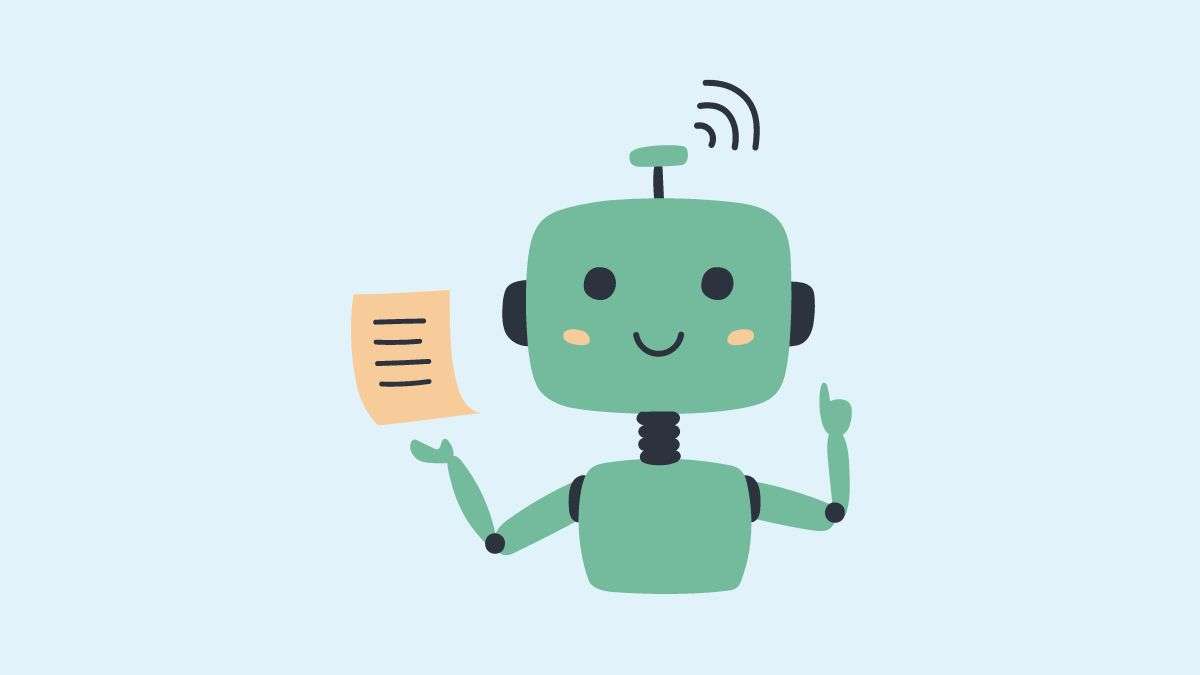Table of Contents
- Introduction
- The Genesis and Early History of ChatGPT
- Milestones and Iterations
- Impact on Conversational AI
- Looking Ahead: Future Prospects
- Conclusion
Introduction
ChatGPT has burst onto the artificial intelligence scene, capturing widespread public attention for its ability to hold natural-language conversations. The article explores the short history of ChatGPT and its massive potential.
As a conversational agent powered by OpenAI’s GPT-3 language model (with periodic updates on the version), ChatGPT demonstrates remarkable human-like responses across various topics and questions.
In many ways, ChatGPT represents a significant leap forward for chatbots and AI assistants. Its nuanced responses were previously unseen in conversational agents trained solely through rules-based programming. By fine-tuning GPT-3’s deep learning model on a massive dataset of online conversations, the creators of ChatGPT unlocked new levels of contextual awareness and reasoning ability.
The launch of ChatGPT has sparked extensive discussion about the future of AI and its potential impacts on education, business, and society. Its impressive language faculties raise interesting questions about creativity, ethics, and whether an AI can truly understand the concepts it discusses so articulately.
This write-up takes a deeper look at the origins and evolution of ChatGPT to understand better where this influential technology came from and where it might be headed next. By exploring the genesis of ChatGPT, its ongoing development, and its broader influences, we gain critical insight into the state of conversational AI.
The Genesis and Early History of ChatGPT
ChatGPT began in 2020 when researchers at OpenAI sought to develop a conversational AI system that could understand context and provide helpful, nuanced responses. Motivated by the limitations of previous chatbots, they aimed to create an AI assistant that was not rule-based but instead learned through absorbing vast amounts of textual data.
Early Development Focused on Versatility
In the early stages, the OpenAI team focused on training ChatGPT to be as versatile as possible. They curated a diverse dataset spanning different topics and formats like articles, stories, emails, and more. By exposing ChatGPT to such varied content, the researchers enabled it to discuss an extensive range of subjects.
However, this broad focus came with challenges. Without more specialized training, ChatGPT struggled with responding accurately and appropriately across all domains. The researchers realized they needed to improve how ChatGPT learned from data.
Reinforcement Learning Shaped Foundational Principles
A major breakthrough came when the OpenAI team incorporated reinforcement learning into ChatGPT’s training process. Via this technique, they could give feedback to guide ChatGPT towards more helpful, harmless responses.
Over time and through extensive reinforcement, foundational principles took hold in ChatGPT: provide accurate, nuanced information; admit knowledge gaps if unsure; avoid false expertise; and give beneficial guidance aligned with human values.
By instilling these principles, the researchers enabled ChatGPT to have more thoughtful, trustworthy conversations on an expanding range of topics. With its strong base established, the path was paved for the continued evolution of this influential AI system.
Milestones and Iterations
ChatGPT has come a long way since its initial release in November 2022. The conversational AI system was created by OpenAI and represented a major breakthrough in natural language processing capabilities. In just a few short months, ChatGPT has already gone through several key iterations and improvements.
The Viral Launch
Shortly after ChatGPT was unveiled to the public, it quickly went viral as people were amazed by its human-like conversational abilities. Within just five days, over 1 million users had interacted with ChatGPT. This enormous influx of users provided OpenAI with large volumes of valuable conversation data to help further train and refine the model.
Upgrades to Quality and Safety
As ChatGPT’s user base exploded, OpenAI worked rapidly to upgrade quality assurance systems and content safety filters. These upgrades aimed to improve the accuracy of ChatGPT’s responses and reduce potential harm from misinformation or toxic content generation. User feedback highlighting issues around bias and misinformation particularly drove many of these early model tweaks.
Integration of Reinforcement Learning
In January 2023, OpenAI incorporated a reinforcement learning technique called RLHF (reinforcement learning from human feedback). This allowed ChatGPT to learn interactively with human feedback signals. When users provide positive or negative reactions to responses, this data trains the model to strengthen beneficial behaviors. The integration of RLHF made conversations feel more natural and helped ChatGPT provide more pertinent, factual answers.
Specialized Model Versions
As ChatGPT is used for an increasingly diverse range of professional use cases, OpenAI has begun tailoring specialized model versions. These include Claude for customer service applications and Sydney for providing coding explanations and documentation. Such specialized versions allow ChatGPT to provide higher-quality responses for certain conversation domains.
With continual model updates based on user interactions and targeted feedback, ChatGPT is rapidly evolving. We expect its capabilities to grow dramatically in the years ahead thanks to OpenAI’s commitment to responsible AI development.
Impact on Conversational AI
ChatGPT has had a profound impact on the field of conversational AI. Its natural language capabilities and human-like responses have set a new standard for chatbots and dialogue systems. One major way ChatGPT has influenced the field is by demonstrating the potential of large language models. ChatGPT was trained on a massive dataset using self-supervised learning, allowing it to have more versatile conversations than previous AI assistants. This breakthrough has led many technology companies to invest heavily in developing their large language models.
ChatGPT has also accelerated innovation in conversational AI across industries. For example, ChatGPT is being tested as a virtual assistant that can understand complex customer requests and provide detailed responses in customer service. Its ability to answer follow-up questions makes it useful for tasks like providing technical support. In the medical domain, ChatGPT can understand patient symptoms and medical history to suggest possible diagnoses or next steps while avoiding giving direct medical advice without oversight from a professional.
Some other domains where early ChatGPT applications are emerging include:
- Education – Personalized tutoring, providing explanations and study aids
- Business – Composing emails, analyzing data to derive insights, generating reports
- Creative writing – Assisting authors with worldbuilding, character development, and plot outlines
- Academic publishing – improving quality, peer review, and citations of academic papers
As ChatGPT continues to evolve, an exciting possibility is the prospect of more specialized versions tailored to different industries. Further training on industry-specific data could produce AI assistants with an even richer understanding of professional domains and terminology.
However, the rise of ChatGPT also raises important ethical considerations regarding issues like bias, misinformation, and integrity. As conversational AI advances, technologists and policymakers face the challenge of cultivating innovation while establishing appropriate safeguards. If developed responsibly, tools like ChatGPT have immense potential to augment human capabilities across many facets of work and life.
Looking Ahead: Future Prospects
As we appreciate the history of ChatGPT and its evolution, exciting potential developments are on the horizon. Both technical innovations and broader applications could shape ChatGPT’s future capabilities.
Enhanced Reasoning and Knowledge
One area of advancement is improving ChatGPT’s reasoning skills and knowledge base. Additional training on diverse datasets, integrating structured knowledge graphs, and employing more advanced reasoning algorithms could make ChatGPT better at logical thinking and drawing connections between concepts. This could expand the range of topics ChatGPT can discuss and the depth of its analysis.
Specialization for Different Domains
We may also see specialized versions of ChatGPT focused on particular topics like medicine, law, engineering, etc. By training on domain-specific data, these models could provide more accurate, nuanced responses related to that field. This could increase ChatGPT’s usefulness for professional applications.
Multimodal Abilities
Currently, ChatGPT primarily works with text. However, integrating other modalities like images, audio, and video could make ChatGPT more versatile. For example, generating images or diagrams to accompany its textual explanations could aid understanding. Conforming naturally using both text and speech would also make ChatGPT more accessible.
Ethical Considerations
As large language models advance, ethical challenges remain around bias, misinformation, and responsible development. Continued research into techniques like value alignment and transparency and developing best practices around access and system capabilities will be vital to ensuring models like ChatGPT benefit society. Maintaining diverse, ethical teams of researchers will also help guide the technology responsibly.

ChatGPT has already had a major influence on the landscape of AI. As it continues to develop, prioritizing beneficial real-world impact, safety, and ethics alongside innovation will help unlock its full potential while avoiding potential harm. Exciting times lie ahead as conversational AI continues to evolve.
Conclusion
Despite being relatively new, the history of ChatGPT proves that the platform will continue to revolutionize many industries. From its inception as a research project to explore conversational AI to becoming an internet phenomenon that has captured the public’s imagination, ChatGPT’s evolution has shaped the landscape of artificial intelligence.
By reviewing the history of ChatGPT, key takeaways emerge:
- ChatGPT represents a massive leap forward in conversational AI. Its ability to understand context, follow logical reasoning, and generate coherent, human-like responses opens new possibilities for AI applications.
- Real-world usage and user feedback have been critical for ChatGPT’s rapid improvement. As people interact with ChatGPT in unexpected ways, the model learns and becomes more capable.
- ChatGPT foreshadows a future powered by conversational AI interfaces. As technology advances, even more industries and domains could be transformed by integrating natural language AI.
